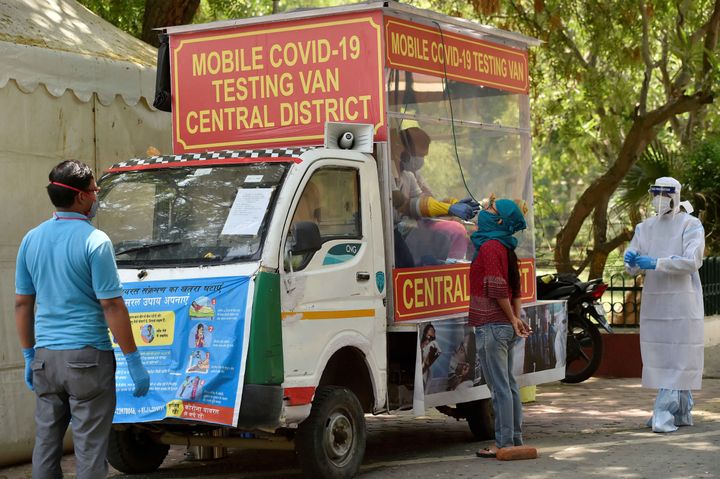
As Covid-19 cases spike in India, the Union health ministry has said that given the size of India’s population, herd immunity “cannot be a strategic choice or option” to stem the spread of the disease. It also urged people to follow “Covid-appropriate” behaviour till a vaccine is developed.
Experts told HuffPost India why achieving herd immunity is not possible practically and the dangers associated with it.
At its press briefing on Thursday, when asked whether India was approaching herd immunity, Officer on Special Duty in the ministry Rajesh Bhushan replied that herd immunity is a kind of indirect protection from an infectious disease like Covid-19, according to PTI.
“In a country with the size of the population like India, herd immunity cannot be a strategic choice or option. It can only be an outcome, and that too at a very high cost as it means lakhs of people will have to be infected, get hospitalised and many will die in the process,” Bhushan said.
He added that herd immunity can only be achieved through immunisation in India but that is in the future. For now, he said, “we have to follow Covid-appropriate behaviour” like wearing masks, avoiding gatherings, maintaining physical distancing and following hand hygiene.
Delhi’s sero survey — which showed that over 23% of Delhi’s population had been exposed to the virus — showed that herd immunity is possible, but it comes with a rider, AK Sharma, Head of Department of Community Medicine,
University of Delhi told HuffPost India.
“For at least 60% of India’s population to get infected (to achieve herd immunity), about 70 crore people must get infected. This is not possible in the sense that in remote or rural areas, we do not have the means to find out what the prevalence of the virus is. To find that out, we will need to carry out a huge surveillance study across the country. The time, money and resources required to carry out this study right now will be a lot. In this sense, the government must have said it’s not feasible. Herd immunity is not possible practically, theoretically yes.
“The length of the disease in our country is two-three months because the majority of the infections in India occurred in the months of May and June. We cannot say yet if the immunity will last beyond six months or one year. We will only know this if someone has lived after the virus for five years. Otherwise, we have to mount a prolonged study among those who got infected and start looking at their antibodies every 15 days or one month and see if the antibodies are persisting or declining. If they are declining, when are they coming to the point where a person is susceptible to getting reinfected. This information cannot be obtained right now and no speculations can be made.”
In an interview with HuffPost India earlier this month, public health expert Imrana Qadeer, distinguished professor at the New Delhi-based Council for Social Development, explained the dangers associated with herd immunity in India.
“When a large percentage of the population acquires an infection, depending upon the nature of the pathogen it may or may not develop immunity. The immunity may be permanent or temporary. It is estimated that in the case of Covid, 60-80% of the population has to be infected when those not infected can be shielded by the acquired immunity of the infected around them. Surrounded by immune persons, a non-immune person is indirectly protected as the pathogen cannot reach them through this human shield. Vaccines evolved to cut short the dependence on this not so predictable though natural process. It exists irrespective of policy.
“In the case of smallpox too, it was assumed that herd immunity will work with 60-80% population coverage with vaccine, but it did not work with this kind of coverage. WHO chose to use the strategy of identification and immunisation of the family and the surrounding population of the village. While smallpox was a virus that spread very slowly, Covid has a much higher reproducibility rate and hence, whether even this proportion of population coverage works is not definite. Leaving populations to develop herd immunity (‘herd immunity approach’) amounts to non-action and letting the virus spread fast when we know that some severe and critical cases are fatal, particularly if they don’t get medical care. Letting infection spread quickly will overwhelm hospitals with a rush of patients. Also, we can’t protect our old and expose the young – which the proponents propose; not in a country where population density is high, small rooms and basic amenities are shared by many. In India particularly, those infected young people will take the infection back to the vulnerable elderly.”